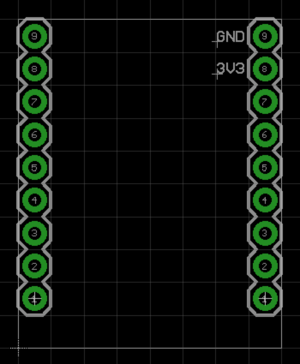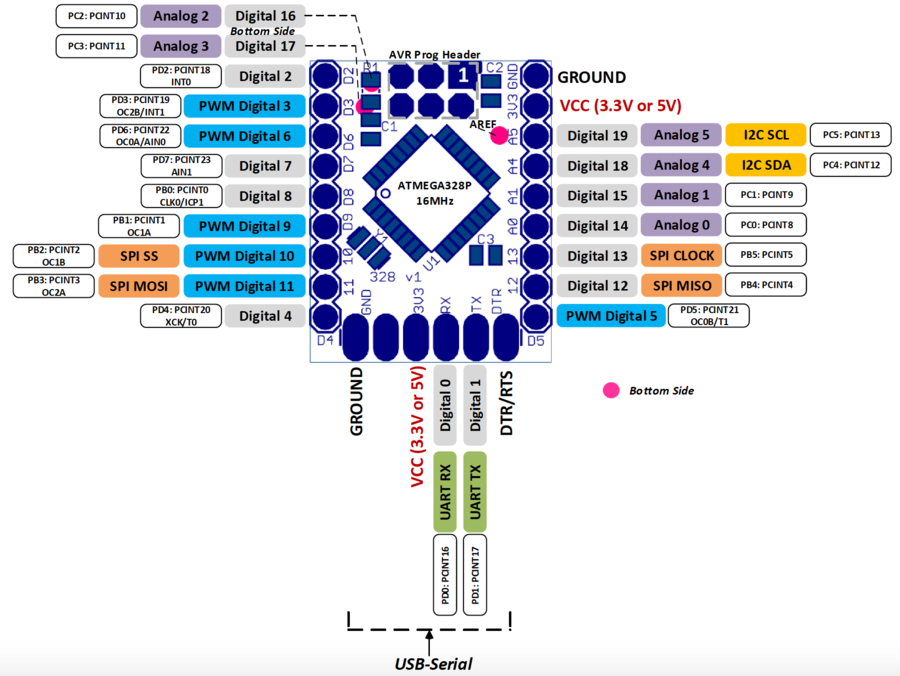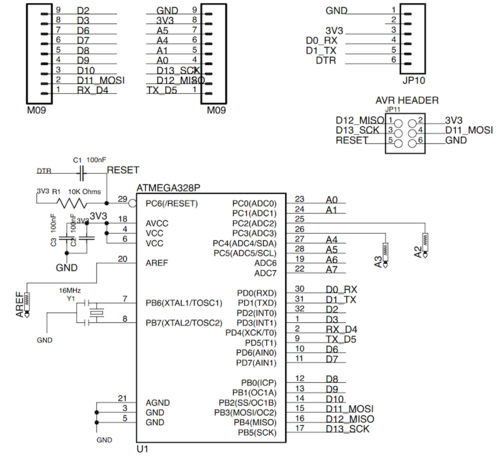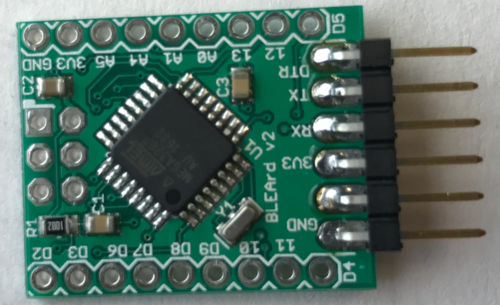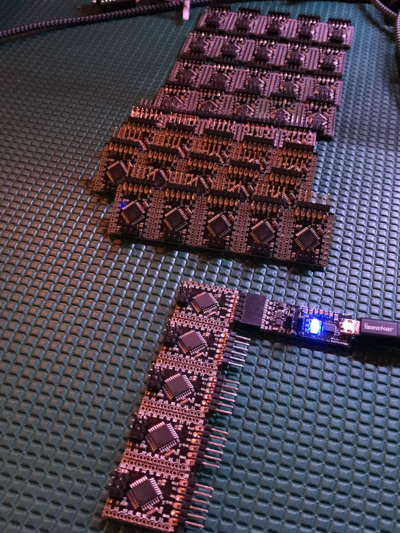BlankBoard
...Back to Projects:
Contents
The Blank Mini Board
Introduction
This is the Eagle Project that can be used to create your mini boards compatible with the Platform Board or as a stackable board with any of the other mini boards like the BLE Board or 328 Board
- Uses the very popular ATMEGA328P Microcontroller with 32k of Flash Memory, 2k of RAM, and 1k of Non-Volitale Memory (EEPROM)
- Very Small Form Factor 0.8x1.0" or 20.32x25.4mm
- Compatible with the Arduino IDE and comes pre-programmed with the Arduino Mini (ATMEGA328) boot loader.
- Native x6 pin AVR header (ICSP) and x6 pin FTDI header both populated for a very flexible programming experience.
- Clocked at 16MHz with an external crystal
Pinout
Schematic
Purchase
Board is now available!! HERE
Parts
The parts list can be downloaded **HERE**. This can be directly uploaded into Digikey if you'd like.
Assembly
Here is what the board looks like when assembled - the only missing components here are the 9 pin headers and the x6 pin AVR programming header
And here's a video showing how I actually hand assembled this board:
I buy the stainless stencils here: http://www.electrodragon.com/product-category/new-products/pcb-service-new-products/ Plastic Stencils here: https://www.pololu.com/product/446 Hot Air Station here: https://www.amazon.com/gp/product/B00ITMPQS2/ref=oh_aui_detailpage_o04_s00?ie=UTF8&psc=1 Solder Paste: SMD291SNL10 (I keep mine refrigerated when not in use, then sit out for an hour or so before I need it) https://www.digikey.com/product-detail/en/chip-quik-inc/SMD291SNL10/SMD291SNL10-ND/2057272
Programming
If you want to be able to program the ATMEGA 328 from the Arduino IDE, then you'll need to first load the boot loader. My preferred method is to use Nick Gammon's sketch running on another Arduino:
A big thanks to Nick Gammon for putting this together: http://www.gammon.com.au/bootloader The git hub link is here: https://github.com/nickgammon/arduino_sketches Click the Download Zip button, then pull out the Atmega Programmer folder and drop that right into your Sketches folder" Another way to do it: https://github.com/bkibby/OptiLoader
Note - from the board selection, if you're running at 16MHz, then select Arduino Mini, 328 processor. Then you're all set to use the USB-Serial Converter with the 328 board:
Tutorials
Coming soon
